Rockhounding at Gemstone Beach is always better with a friend! JP from TumblestoneBlog is back in town so of course we’ve already had a few fossicks together. As JP explains in his blog post, it was an eventful fossick due to finding large numbers of hydrogrossular garnets but the highlight was meeting a fellow fossicker who showed us a blue Gemstone Beach sapphire that he had just found. I asked if I could take a photo and was granted permission. The blueness was spectacular!
Rubies and sapphires are the same mineral: corundum, with different trace minerals creating a wide variety of colour.
“A gemstone-quality specimen of corundum with a deep red colour is known as a “ruby.” A gemstone-quality corundum with a blue colour is called a “sapphire.” Source
These stones were collected from our first 2024 fossick on Saturday, 17 February at Gemstone Beach. Usually the stones would sit in a container for a while but a tumbler just happened to finish a batch which prompted me to load it up with these newly found beauties! In particular I am following the polishing journey of the four stones pictured below. The red ones are very bright red and the larger stone on the far right has these bright red veins.
Batch 52: 3lb Tumbler 4
Stage 1: 80/100grit
Number of Stones: 48
Weight in: 805grams
4 Tbspns of 80/100grit
1 Tbspn Borax
No pellets/media added
Days Tumbling: 10
Weight out: 680g – loss of 125grams
Stage 2: 220grit
Removed 1 stone as it needs to repeat Stage 1
Number of Stones: 47
Weight in: 626grams
4 Tbspns of 220grit
1 Tbspn Borax
Ceramic media added
Days Tumbling: 11
Weight out: 532g – loss of 94grams
Stage 3: 400grit
Number of Stones: 47
Weight in: 532g
4 Tbspns of 400grit
1 Tbspn Borax
Ceramic media added
Days Tumbling:
Weight out: 418g – loss of 114grams
Batch 52: Pre-tumble
Batch 52: After 220grit
Notes: There was no obvious pitting/bruising after 400grit (Stage 3) but the odd stone or three have little gouges that will never tumble out completely without losing the majority of the stone. At that stage you either decide you can live with the gouges and not having a flawless shine or you discard those particular stones to the garden pots! I decided to keep the stones and let them go through to the next stage.
After talking with JP about my disappointing polish finishing as of late, I am going with his suggestion of doing a 600grit tumble prior to using the tumble polish. JP also suggested closely inspecting the stones both wet AND dry before moving on to the polish cycle.
Stage 4: 600grit
Number of Stones: 47
Weight in: 418g
4 Tbspns of 400grit
1 Tbspn Borax
Ceramic media added
Days Tumbling: 11
Weight out: 370g – loss of 48grams
Transfer to 4lb Tumbler
All stones (except for the three removed) looked pretty smooth upon closer inspection. After a 24hour soap tumble this batch of 44 stones weighing in at 349grams was transferred to 4lbT1 for polishing along with stones from Batch 53, Batch 49 and Batch 51.
Stage 5: Tumble Polish Mix
Number of Stones: 44+12+38+46=140
Weight in: 1991g
Polish Mix (NEW): 9 Tbspns of polish mixed with 600mls of clean water. Plastic Pellets added.
Days Tumbling: 11
I am much happier with the outcome of this batch. There was hardly any bruising and only a few stones had “dull patches” which I am pretty sure is down to the material in the stone not being the type to take a polish very well.
These stones did not need a burnish in borax.
Note: I have lost track of the very bright red stone in image 2.
I can’t find it any where in my notes – I am hoping it’s in another barrel somewhere doing a redo tumble. Usually I note down these things but for some reason this time I haven’t.
Polish Complete
Polished Stones of Interest: Batch 52
Batch 52 | 3lb Tumbler 4 | Gemstone Beach | 17 February – 29 March 2024
4lb Tumbler 1 | Batch 52, 53, 51 & Batch 49 | Gemstone Beach, Kakanui, Hampden Beach | 29 March – 7 April 2024

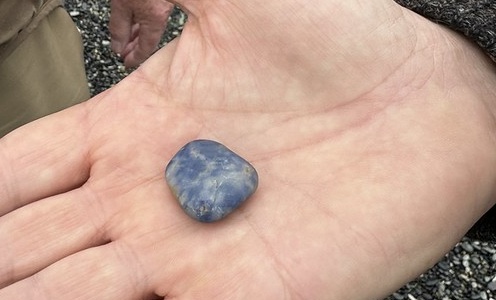
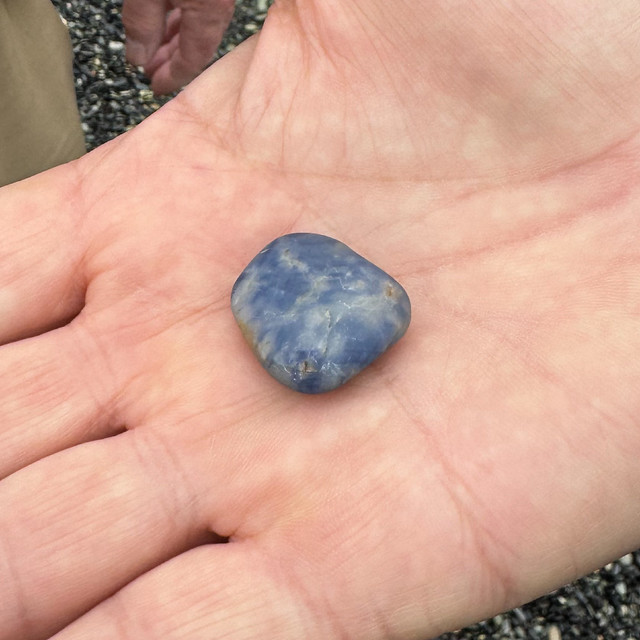
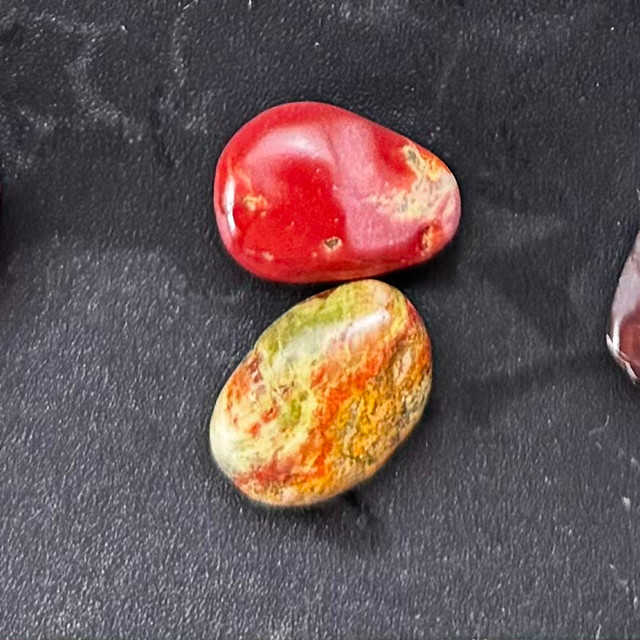
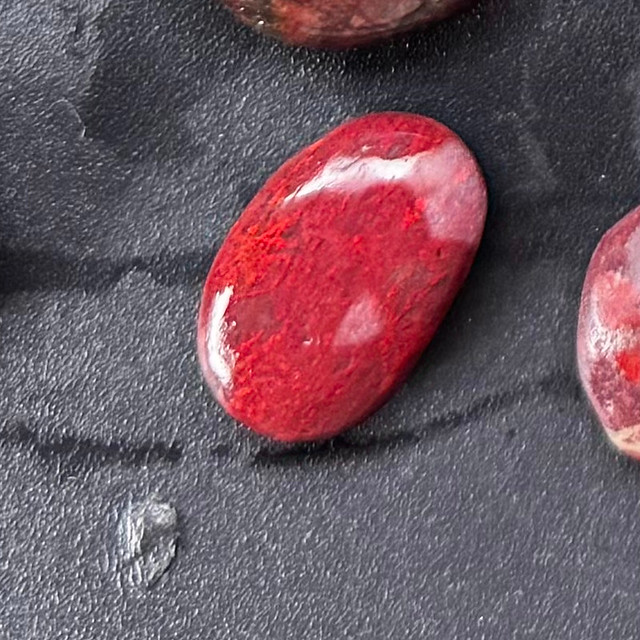

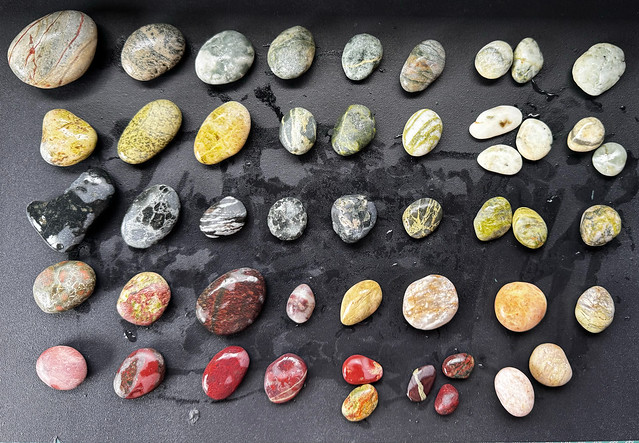
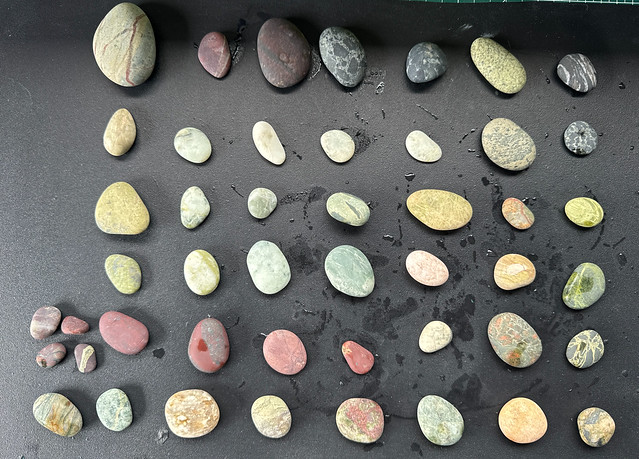

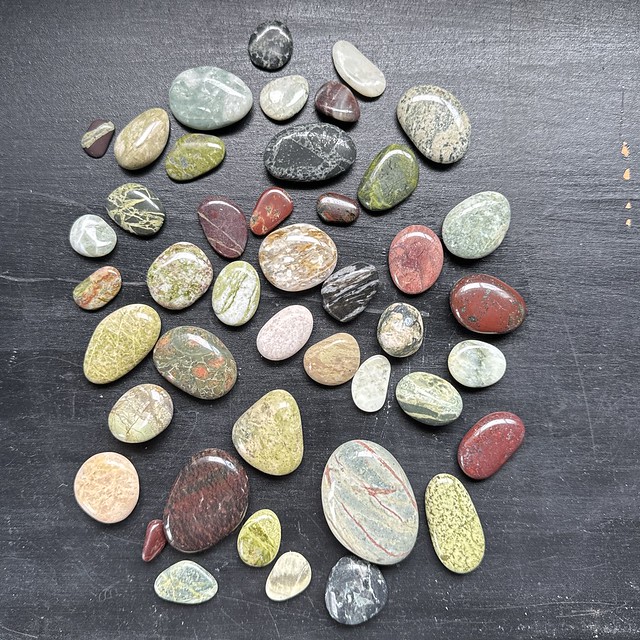
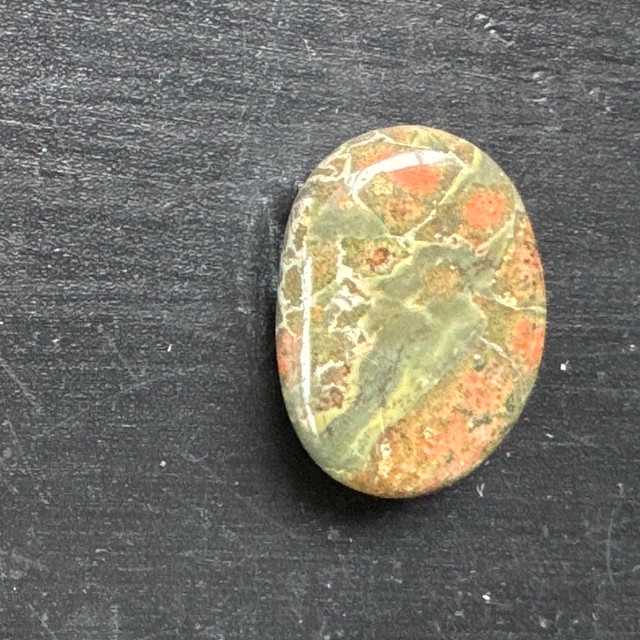
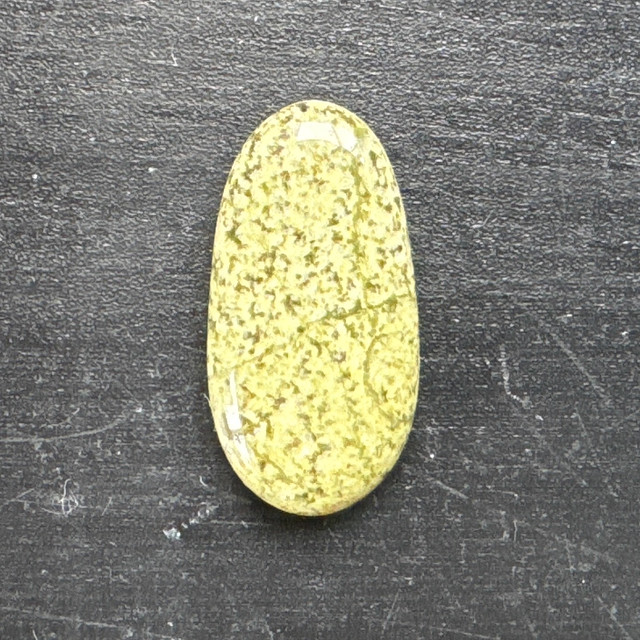
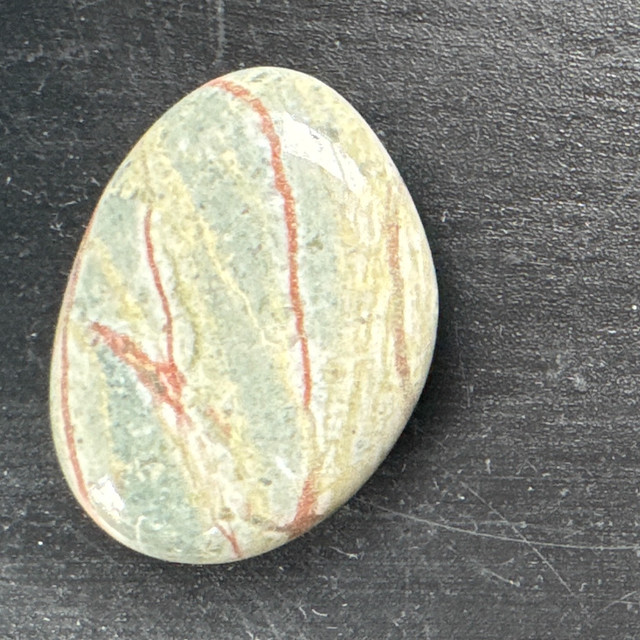


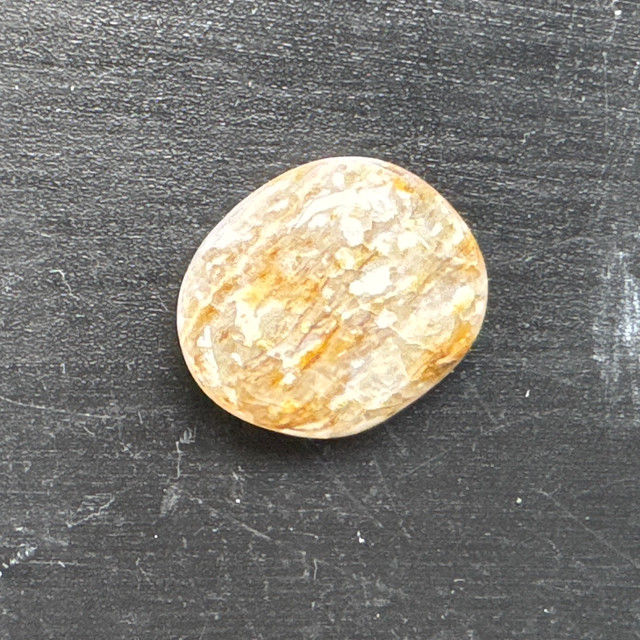
I’m not sure that #10 is spotted argillite – does it in fact have “spots”? Compare it with Stones Gn20 to Gn31 in my Post https://tumblestoneblog.wordpress.com/2023/12/16/ts2-gemstone-beach-and-its-stones-an-introduction-for-the-passing-motorist-part-seven-a-green-argillite-stones/
It is definitely a “soft stone” (perhaps it’s a type of mudstone instead – I’ve managed to pick up another very similar one over the Easter weekend too). If I zoom in on it, you are right, they actually aren’t spots at all!!
Stone 13 is also brecciated.
I would never have thought to call that brecciated – it looks like someone blew bubbles over the bottom of that stone. I need to do some research on breccia and what that actually means as I feel I have this idea of word but my idea isn’t actually what the word means! (if you know what I mean )
)